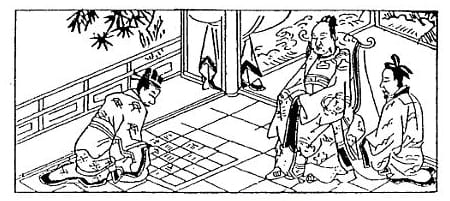Artist Ryan Kuo has developed three separate yet interlinked projects specifically for publication on Art Journal Open’s web platform. The first is “In Submission,” an essay that points to several overlapping rhetorical conditions in the fields of publishing, art exhibition, and web design. Above all, “In Submission” advances the fact that whiteness should not be read as a neutral formal condition. The second component of Kuo’s contribution, Tables of Content, takes the shape of a unique artist’s project. Tables of Content uses the seemingly utilitarian form of data tables to animate and underscore many of the self-reflexive and social aspects of design and race that Kuo raises in his first text. The third and final installment is the following text, “Building a Table,” which contextualizes the material conditions of Kuo’s use of HTML and other protocols, while pointing to historical and technical methods of grouping and ordering—highlighting how seemingly benign typologies have profound social and political implications for the management of bodies and knowledge. These lines of inquiry remain integral to Kuo’s work as an artist.
–Gloria Sutton, Former Web Editor
Tables of Content is a series of data tables that collect and organize what is left in the trail of my essay, “In Submission.” An academic or scientific article is often bolstered by a table, which places words into more analytical and arbitrary configurations. A table can contain feelings, intimations, and digressions that are necessarily flattened by a linear sequence of text.
Data tables may share lineage with counting boards once used for mathematics and accounting, though they also echo the boards used in games like checkers, backgammon, and Go. Bodies in rows and columns, united in business and play, are redefined in terms of their exchange value.

The pleasure of building a table is to invent new terms to be connected and contained. Wishing to extend that sensation, I produced a branching sequence of ninety-two tables for Tables of Content, each iterating on the last. The sequence can itself be considered a table that is arrayed in clicks and cuts as well as across rows and columns.
Each table was built in HTML, the markup language that structures text and images on the web. To work with raw HTML is to operate the tenuous mechanism that holds rows and columns in relation. The HTML syntax for tables is notoriously cumbersome, akin to building a brick wall by first measuring the space needed for each brick, setting the mortar, and then inserting bricks into the grid.
| Series for Art Journal Open | ||
|---|---|---|
| Part 1 | Part 2 | Part 3 |
| In Submission | Tables of Content | Building a Table |
In the HTML that renders the above table, rows are demarcated and cells appended to each row one-by-one. There is no syntax that actually defines the visual relationships between the table headings and columns. These are expressed by accident.
<table>
<tr>
<th colspan=3>Series for Art Journal Open</th>
</tr>
<tr>
<th>Part 1</th>
<th>Part 2</th>
<th>Part 3</th>
</tr>
<tr>
<td>In Submission</td>
<td><i>Tables of Content</i><td>
<td>Building a Table</td>
</tr>
</table>
The benefit of this code is that HTML tables can be customized to a fault. It’s possible to specify the size of each individual cell, the thickness of the border on each side of every cell, and even the spaces between the cell borders, which causes the table to break apart, along with the illusion of seamless rows and columns.
The more tortuous the code, the more it can be nudged and jumbled to meaningful effect. By altering and adding pieces, leaving information out, and generally mistrusting the code to be coherent, columns misalign, rows spill outward, cells envelop other cells, lines cross and split into walls and boxes.
| Series for Art Journal Open | Part 1 | Part 2 | Part 3 | In Submission | Tables of Content | Building a Table | ||
|---|---|---|---|---|---|---|---|---|
This play happens because it can. But what is really absurd is a table that makes sense, an abstraction that reads as a figure. This figure claims that the world is an exchange and things are its tokens. A claim resting on a contradiction might as well crumble when we touch it. The language of the web offers evidence of the many convolutions that go into putting a thought in a hole: in this case, a word in a cell in a table in a frame in an article on a page of a site.
Ryan Kuo is an artist and writer based in Cambridge, MA. He received a Master of Science in Art, Culture and Technology from MIT in 2014. His work in digital media utilizes techniques gleaned from video games, web design, motion graphics, scriptwriting, and sample-based rave music. Among his current projects, Ryan is maintaining File, a hypertext process work collected by Left Gallery (Berlin) and inspired by agile process management; and building an artist’s book about aspirational workflows, File: A User’s Manual, modeled after software guides for power users. His works and writing have recently shown at Spike Art Quarterly (Berlin), Goldsmiths (London), Carpenter Center for the Visual Arts (Cambridge, MA), Boston Cyberarts (Boston), MIT Media Lab (Cambridge, MA), Front/Space (Kansas City), and Minibar (Stockholm). He was an NEA Art Works resident artist at Residency Unlimited (New York) in summer 2017.

